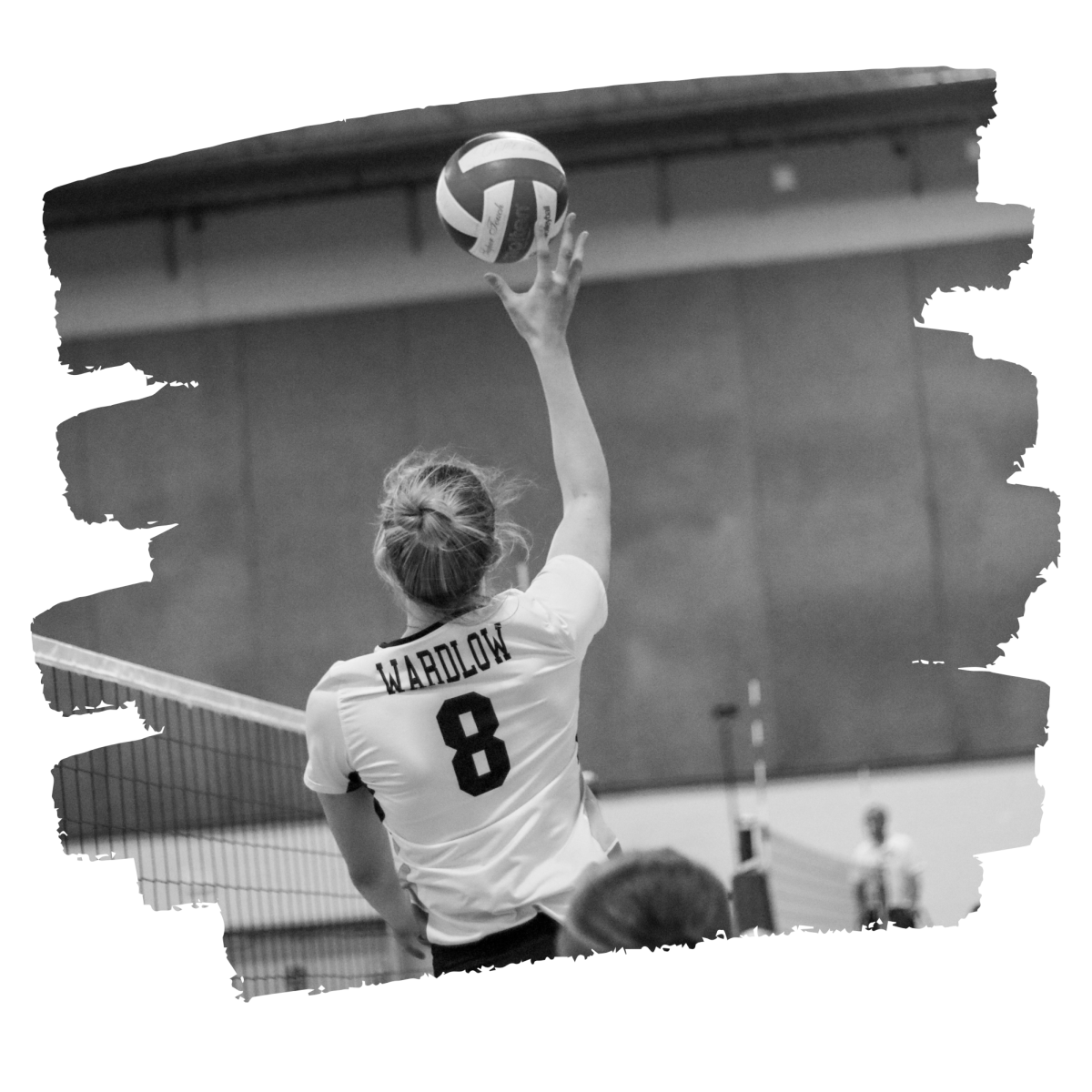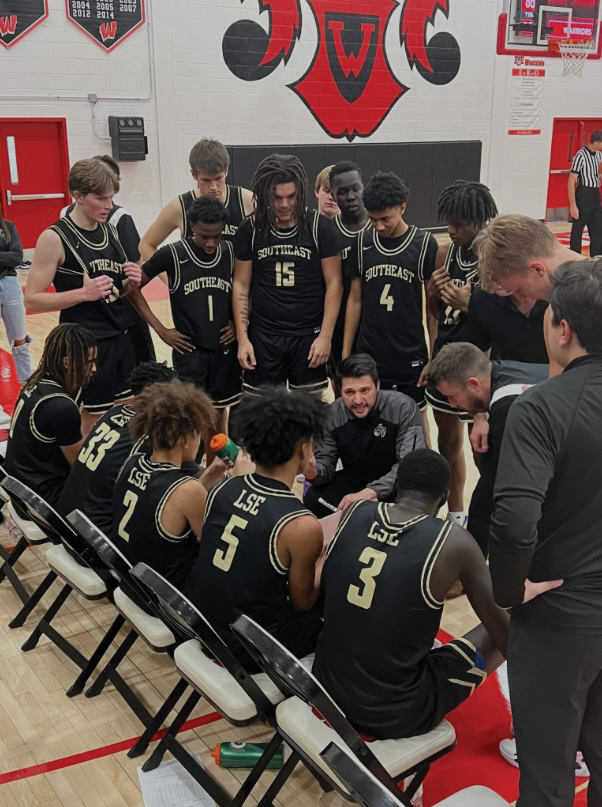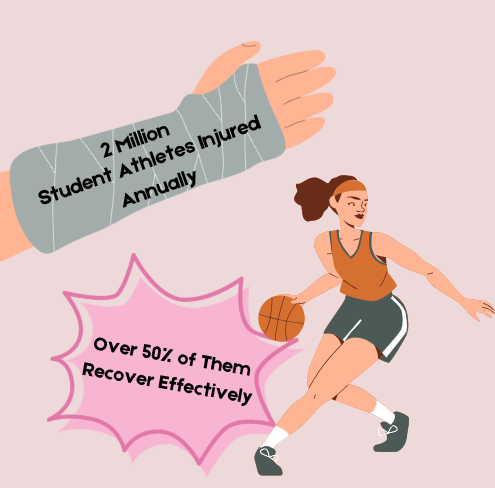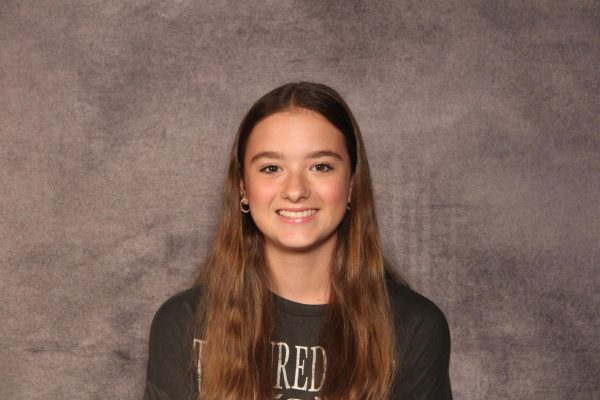A select group of Southeast student athletes eagerly approach the cloth-clad table, taking their designated seats. Pen and paper in hand, they individually sign, each establishing their college commitment. The crowd of parents, siblings, teachers, and colleagues applaud proudly, exchanging bright smiles. For many of these athletes, this moment signified an incredibly important decision of their high-school careers, and lifted a weight off of their chests. This was especially true for LSE senior, Natalie Wardlow, who felt a true sense of contentment and fulfillment after committing to play volleyball in college. For another student athlete, Corinne Barber (12), it was momentous to see her hard work pay off through her signing.
Amidst maintaining a high GPA, completing what feels like countless applications and requesting recommendation letters, a limited number of high school seniors also undertake the commitment to a university’s sports team. According to Scholarship Stats.com, a select 7 percent of high school athletes go on to play a college sport, making these students’ commitments all the more significant. In fact, only 28 athletes from LSE committed during the 2024-2025 school year; fall sport athletes “signed” during first semester and the remaining students committed in the spring.
Some students have planned to pursue a sport for many years and decided to commit to a university almost solely for its athletic program. For others, the university and the academic programs that it offers was the most important factor in the end. One thing that connects all these students, however, is their strong passion and drive for athletics.
Wardlow has been involved in several sports throughout her athletic journey, including basketball, dance and soccer. However, once she started playing volleyball during her seventh grade year, she found that the sport was a great fit for her. In fact, her talent and dedication was able to land her a spot on varsity all four years of high school, and now, a spot on the University of Wisconsion’s volleyball team.
“The university is really pretty, and it has good academics. But on the volleyball side, they have a really good coaching staff, and they really care about their players. Not [just] as athletes, but as people,” Wardlow said. “The place just felt like home to me when I visited it, and all the players were really nice, and very welcoming.”
Along with being offered a spot at Wisconsin, Wardlow looked at attending UNL, Creighton and Penn State for volleyball. After college, Wardlow would like to play the sport professionally, and hopes that it will remain a substantial aspect of her life in the future. Currently, professional volleyball leagues are being formed nationwide, and Wardlow aspires to play on one of their competition teams after college.
As far as the commitment process goes, student athletes are recruited by colleges nationally based on their level of experience. These university coaches have “dead periods” where they are prohibited from reaching out to students, and they also have “free periods,” which allow them to communicate with the students that they’d like to recruit for their athletic teams. For Wardlow, Wisconsin was the first school to reach out to her (in between eighth and ninth grade), and their interest in her was something that ultimately led to her commitment.
Similar to Wardlow, Barber began playing her sport, tennis, at a young age, and secured a position on the LSE varsity team from her freshman year to her senior year. She was offered a spot on the UNO girls tennis team, and ultimately decided to commit. Barber is currently an undeclared engineering major, yet she may change her field along her college journey. For now, she hopes to focus on playing tennis on her new team.
Southeast senior Dylan McDuffee had a noticeably different experience from Wardlow and Barber with his college commitment. McDuffee had some interest in attending either Kansas State or the Nebraska Wesleyan University as a soccer player, however, he decided to commit to Concordia University for javelin instead. Not only did both of McDuffee’s parents study at Concordia, but he also felt a sense of belonging at the school, appreciated the coaching staff and was interested in attending their secondary education program.
“I really liked the coaches over at Concordia. They were pretty nice, [and they] made me feel like I was at home,” McDuffee said.
However, unlike Wardlow and Barber, McDuffee has actually never participated in his sport before–having only thrown the spear for javelin once–so track will be an entirely new and exciting experience for him.
“Obviously, soccer means a lot, but I’m excited to take this new journey, it should be fun. I think the sport will mean a lot to me by the time I’m done,” McDuffee said.
LSE Athletic Director Kara Graham is incredibly proud of all these students and their commitments.
“I am so honored to watch student-athletes compete and put in the time and work it takes to improve on their abilities for four years, all while attending school,” Graham said. “The opportunity to celebrate their signing to a college is one of the best parts of my job. It means that they want to continue to take what they have learned here at Southeast, and grow as an athlete and a person at the college level.”
A student athlete’s commitment to a college-level sports team displays great dedication and drive. Attending a university for a four-year education is no simple feat. This is especially true for students who enroll in difficult courses, become involved within additional clubs or activities or manage one or more part-time jobs at the same time. Wardlow emphasises how glad she is now that she’s committed, and she hopes to enjoy the remainder of her senior year. It’s very important to her, and other athletes, to still prioritize her high school friendships, and begin to train for her new team without any added pressure. Wardlow, McDuffee and Barber are all examples of how, no matter one’s level or experience, becoming a part of a college’s sports team can be an exciting and unique journey that may just improve one’s overall college experience.
We wish these Knights good luck, for a bright future in athletics and schooling ahead.








